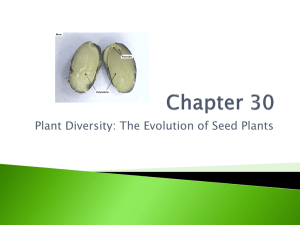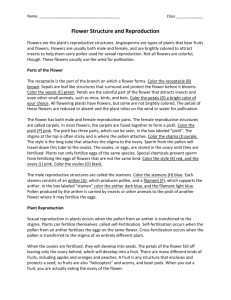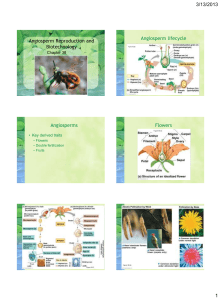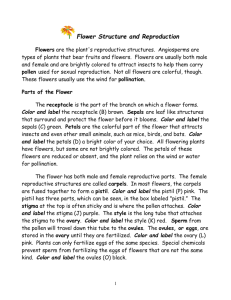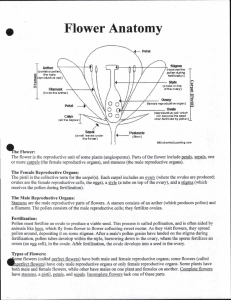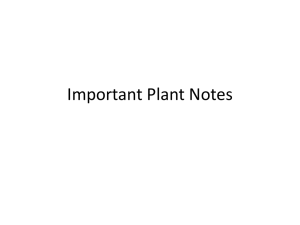B-19 Pollination and Fertilization
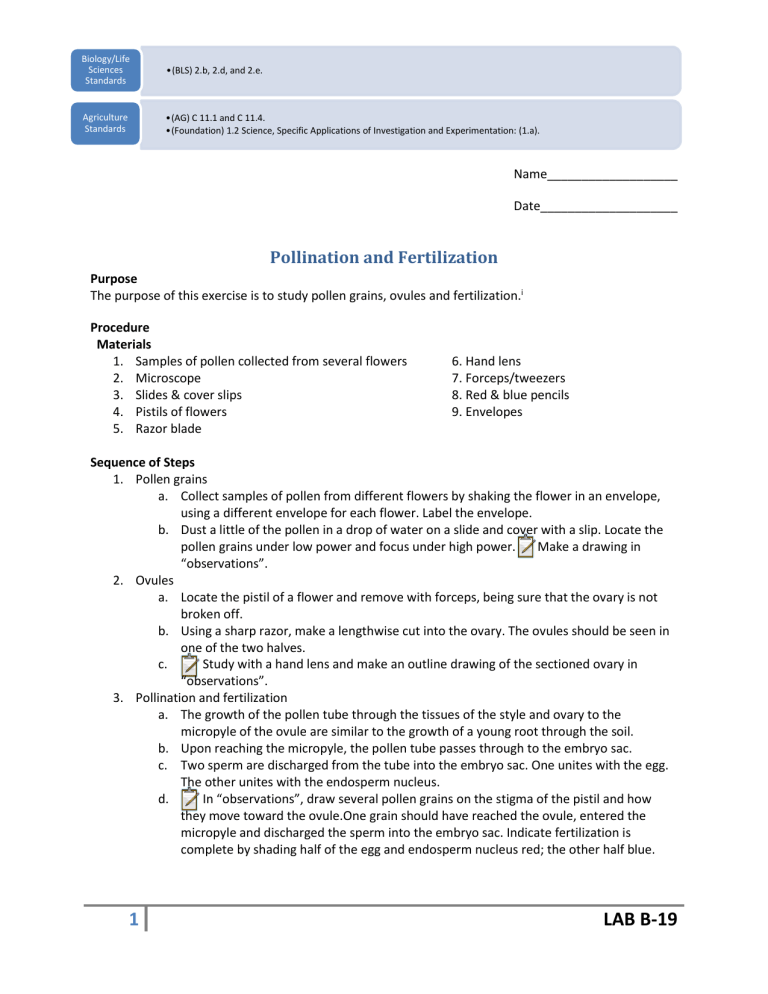
Biology/Life
Sciences
Standards
Agriculture
Standards
•(BLS) 2.b, 2.d, and 2.e.
•(AG) C 11.1 and C 11.4.
•(Foundation) 1.2 Science, Specific Applications of Investigation and Experimentation: (1.a).
Name___________________
Date____________________
Pollination and Fertilization
Purpose
The purpose of this exercise is to study pollen grains, ovules and fertilization.
i
Procedure
Materials
1.
Samples of pollen collected from several flowers
2.
Microscope
3.
Slides & cover slips
4.
Pistils of flowers
6. Hand lens
7. Forceps/tweezers
8. Red & blue pencils
9. Envelopes
5.
Razor blade
Sequence of Steps
1.
Pollen grains a.
Collect samples of pollen from different flowers by shaking the flower in an envelope, using a different envelope for each flower. Label the envelope. b.
Dust a little of the pollen in a drop of water on a slide and cover with a slip. Locate the pollen grains under low power and focus under high power. Make a drawing in
“observations”.
2.
Ovules a.
Locate the pistil of a flower and remove with forceps, being sure that the ovary is not broken off. b.
Using a sharp razor, make a lengthwise cut into the ovary. The ovules should be seen in one of the two halves. c.
Study with a hand lens and make an outline drawing of the sectioned ovary in
“observations”.
3.
Pollination and fertilization a.
The growth of the pollen tube through the tissues of the style and ovary to the micropyle of the ovule are similar to the growth of a young root through the soil. b.
Upon reaching the micropyle, the pollen tube passes through to the embryo sac. c.
Two sperm are discharged from the tube into the embryo sac. One unites with the egg.
The other unites with the endosperm nucleus. d.
In “observations”, draw several pollen grains on the stigma of the pistil and how they move toward the ovule.One grain should have reached the ovule, entered the micropyle and discharged the sperm into the embryo sac. Indicate fertilization is complete by shading half of the egg and endosperm nucleus red; the other half blue.
1 LAB B-19
Observations
1.
Pollen grain drawing: Label the flowers from which they came.
`
2.
Ovule drawing: Draw the ovules as they are attached to the placenta in the ovary. Label ovary, ovules, and placenta.
3.
Pistil section at fertilization: Illustrate and color the section according to the directions above.
ii
Pistil
2 LAB B-19
Conclusions:
1.
Define self-pollination:
2.
What is cross-pollination?
3.
Where in the flower is meiosis occurring?
4.
Compare and contrast sexual vs. asexual reproduction in plants:
5.
What is the name given to the fertilized egg?
6.
Explain why approximately half of an individual plant’s DNA sequence comes from each parent plant.
7.
Study the following flower characteristics and indicate which modifications are for insect, and which are for wind pollination: a.
Brightly colored petals – b.
Perfume glands – c.
Long, protruding stamens – d.
Nectar glands – e.
Pistils with lengthened styles – f.
Flowers lacking petals –
8.
In the flower, which cell(s) undergo meiosis?
9.
What are the male and female gametes in a flower? i
Agricultural Biology Curriculum Lesson Plans. Sacramento: California State Department of Education, Agriculture Education Unit, 1990.
ii
"How to Grow a Flower." The Kaleidoscope of Life. 2002. Program for Interdisciplinary Learning Through the Arts. 3 Oct 2008
<teachart.msu.edu/pila/images/flower.jpg>.
3 LAB B-19





